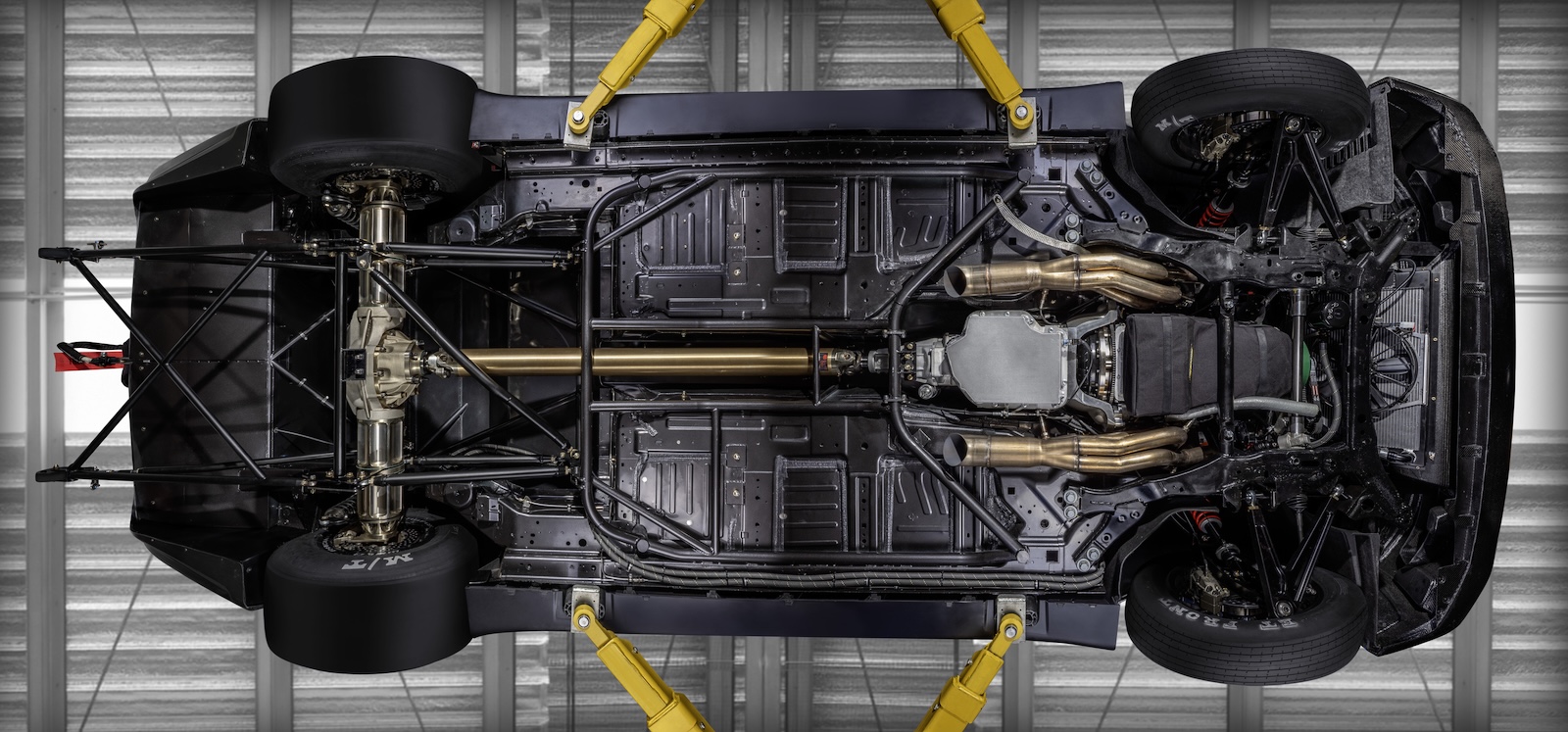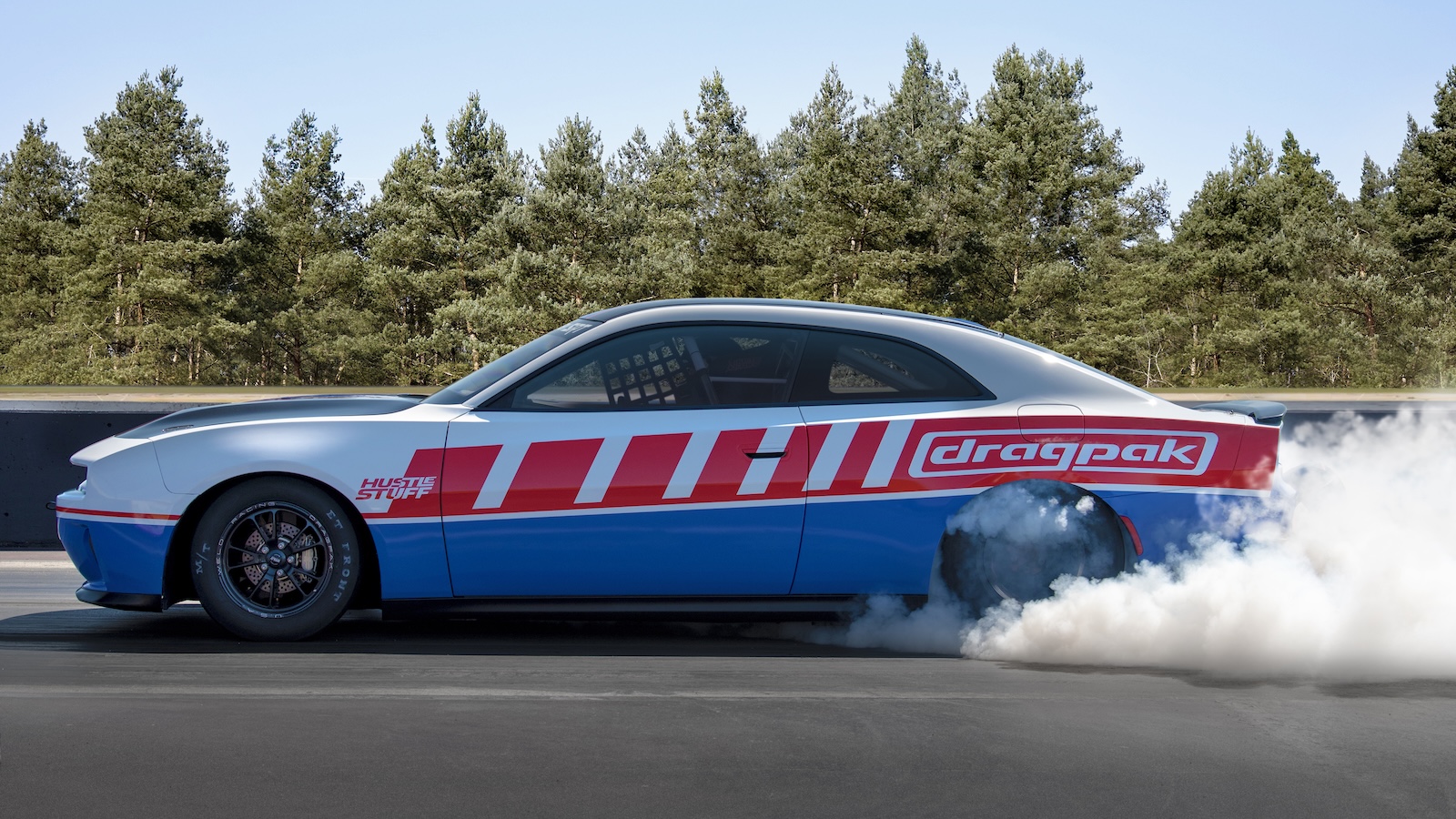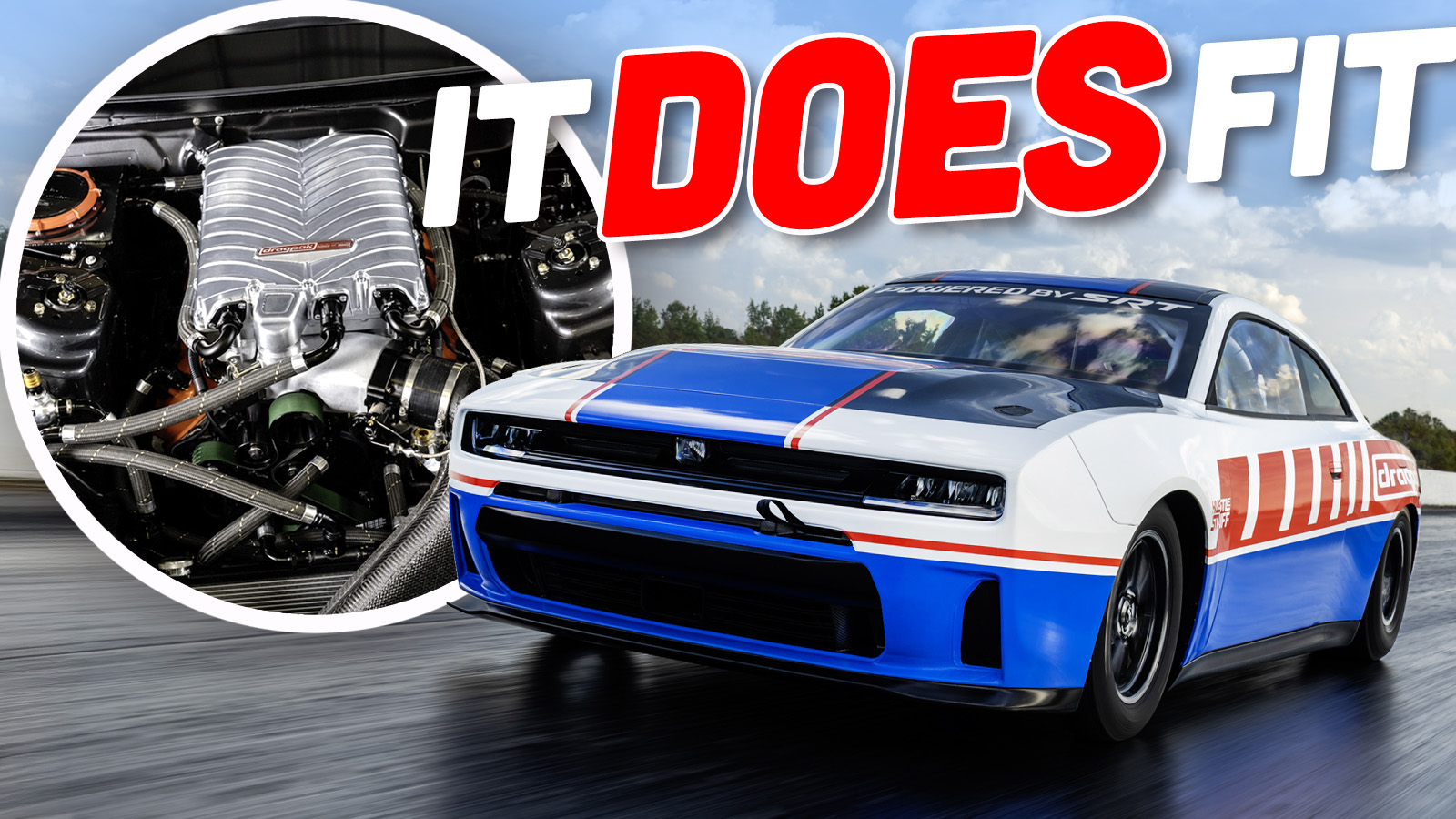When your brand stands for one big thing, it’s usually not a wise idea to get rid of that thing. Porsche almost axed the 911, and now they’re probably glad they didn’t. Chevrolet almost got rid of the Corvette until it made a business case as an American icon. Heck, Ford almost nixed the Mustang for the front-wheel-drive Probe. Dodge actually got rid of its V8 rear-wheel-drive cars, and the results have been a bit predictable. In 2023, Mopar dealerships across the country sold 75,920 Chargers. Last year, that figure was cut in half. While a straight-six gasoline model is nearly here, the fans want that crossplane thump. Well, Dodge has finally unveiled a new Hemi-powered Charger – but it comes with a catch.
See, this isn’t a normal Dodge Charger. It’s an NHRA Factory Stock race car, meaning you won’t be able to drive it on the road, and it doesn’t need to conform to the sort of safety and emissions standards a production car must meet. Sure, the National Hot Rod Association has its own safety standards, but those cover items like a roll cage, fire protection, a driveshaft loop, and an external kill switch rather than, say, DOT glass. This Charger has also been modified to accommodate a four-link live rear axle, a huge departure from the street car’s independent rear suspension. Still, this isn’t a full tube-frame car, so how did Stellantis manage to fit a Hemi into it when, back in 2024, Jalopnik reported that a Dodge engineer claimed the Hemi wouldn’t fit in the new Charger?
It all starts with what Dodge officially calls a “Lightweight front suspension K-member with integrated engine mounts” which seems carefully worded. It’s not uncommon to see tubular steel front subframes used in wild engine swaps, but Dodge has clearly shown off a largely stamped steel subframe with a removable tubular crossmember by posting a photo of the car’s entire underbody. Stamping such a complex part for a rather limited-run vehicle would be wildly expensive, and with the unibody mounting points being identical to those in the Charger Daytona EV, it’s likely Dodge modified a factory part for this application.

Of course, another big difference between the production Chargers and this Hustle Stuff Drag Pak (seriously) car is that the street cars are all-wheel drive, while the drag car is rear-wheel drive. Although the new Charger uses a bolt-in unit hub assembly up front, meaning the steering knuckles could theoretically be repurposed for a rear-wheel-drive application with new hub assemblies that don’t accommodate CV shafts, Stellantis went with entirely new “lightweight race-designed” front knuckles that allowed Dodge to go from divorced lower control arms with double ball joints to forged aluminum A-arms with spherical bearings, all of which are listed on this thing’s spec sheet. That’s a substantial change, although one that has more to do with pushing out the track width of those skinny drag slicks and cutting weight.

Go up top, and some more big differences appear. That 5.8-liter supercharged Hemi looks great, but it’s also quite tall. There isn’t much space between the top of the supercharger lid and the base of the windscreen, so if Dodge were to do a Hemi street car, the engine would likely need to sit forward of the tucked-back position seen in this drag car in order to make space for a windshield wiper transmission and HVAC fresh air intake. However, thanks to the Charger Daytona EV not covering its front strut towers and giving us a glimpse of what they look like in every photo of that car’s frunk, we can see that the Hustle Stuff Drag Pak appears to use factory strut towers, just without the studs for mounting additional bracing. Considering all Factory Stock Showdown cars from the COPO Camaro to the Mustang Cobra Jet use factory towers, it’s likely that Dodge stayed the course here. At the same time, check out the space between the towers and the heads. It might be tight, and Dodge may have gone with a set of stainless steel long-tube headers, but there appears to be visual clearance here.

Of course, the really hard bit about marrying a modern motor with a modern chassis is the electronics integration, and that’s where a race car has a huge leg up on a street car. Here, engine management is tackled by a Holley EFI Dominator ECU, a common aftermarket ECU for racing and custom applications, and the sort of thing enabled by starting with a body-in-white, then sending it down to Riley Technologies to be built.

So, while the first Hemi-powered variant of the new Dodge Charger does start with a factory body-in-white, it’s also taken a whole lot of modification, not just to get the drag-spec powertrain with its force-fed Hemi and three-speed automatic to fit, but to make the whole thing run a sub-eight-second quarter-mile. The electronics are completely different, packaging for stuff like wipers wasn’t a concern, the entire rear suspension setup is different, and even the front suspension components are new. It’s no surprise Dodge and Riley Technologies are only building 50 of these things, each at a list price of $234,995. Is this a sign of things to come? Who knows? All we can say for sure now is that Dodge has made a Hemi fit in the new Dodge Charger, and it rules.
Top graphic image: Dodge









“Hustle Stuff Drag Pak” sounds like the name for sone special purpose clothing to me.
And despite all of that work, it is still a dreadfully ugly vehicle.
The only Stellantis products I could ever imagine buying would be a Peugeot, Citroen or maybe Fiat. And none of those are sold in the US. I guess Fiat sells some cars here, but I don’t want a 500.
A Charger I rented in Hawaii earlier this year was not a fun drive. No, it wasn’t a Hemi, but I only require adequate acceleration, decent handling and not tire-roasting power. The Charger just felt ponderous.
A diesel 307 and a second gen turbodiesel Croma wagon, both rented in Europe in the 2000s, brought me more joy than that Charger.
Supercharge the Hemi, and see if they can get 700 rwh out of it in a mass-produced, relatively-affordable package, and they’ll have the basis of a compelling Hellcat successor.
I don’t know what the drag coefficient of the new Charger is, but the old Hellcats had a Cd value of 0.335. If they could get the new ones down to 0.26(edit: I just looked it up. It has finally been published: 0.28 for the new Charger EV and 0.35 for the Hurricane 6 right now, the 0.28 of the EV matching the earlier ICE-powered Dodge Charger Daytona from the 1970s), a Hellcat’s horsepower might be enough to reach 220 mph, and in spite of possibly being heavier than the earlier Hellcats, it might have faster acceleration over ~130 mph from drag reduction. They could go way lower than 0.26 Cd, of course, but not with that particular body style.
I think it would be a lot cooler to ditch the Banshee platform and make the Charger look like a Pro-Stock car from the factory, aerodynamically efficient as possible, inspired by the 1999 Charger R/T concept, but still a streetable US musclecar with a big V8. Get a Cd value into the sub-0.2 range, and have just enough downforce to retain basic stability at top speed(no more). Keep it a small-ish car, targeting a mass below 3,200 lbs. RWD, of course. Still could seat 4 comfortably, like a sedan should, although have 2-door coupe versions with the same passenger space. They could maybe have a 240 mph monster made with mass-produced parts, for attainable prices, when all is said and done, and it would be way more dangerous and hoonable than the Hellcats of yore.
That Hellcat platform and variant could then be a halo for all sorts of performance-oriented AFFORDABLE ECONOMY CARS with 4-cylinder engines, with more upscale variants including a 4-cylinder tuned Cummins swap, the Hurricane inline-6, starting at maybe $25,000-ish MSRP for the base stripper gasoline 4-banger all the way up to the $100k fully-loaded Hellcat, and every offering priced in-between(including an EV, by bringing back the Neon). But even the basic $25k 4-cylinder car might hit 180+ mph top end and do 0-60 mph in under 5 seconds, and get 50+ mpg highway, with drag and mass of the sort, with the Cummins approaching 80 mpg and offering similar performance. And there should be much less expensive base-models stripped of everything for all performance levels, so maybe you get a stripped Hurricane 6 for $35k-40k that runs 11s and exceeds 200 mph top speed and a stripped Hellcat for $60k that’s even faster.
Can I have some of what you’re smoking?
If it costs $235,000 to make it fit, it probably does not fit.
If they put the Hemi back in there they will surely sell a lot more. The 6 cyl turbo surely will be quick but many just want that sweet V8 rumble.
When I look back and Huibert’s post about the double ball joint front suspension, I remember why I subscribed to this website.
First class automotive journalism, Thomas. Thank you.
Oh my, I haven’t drown in jargon like this since I’ve learned about the Rockwell Retro Encabulator years ago